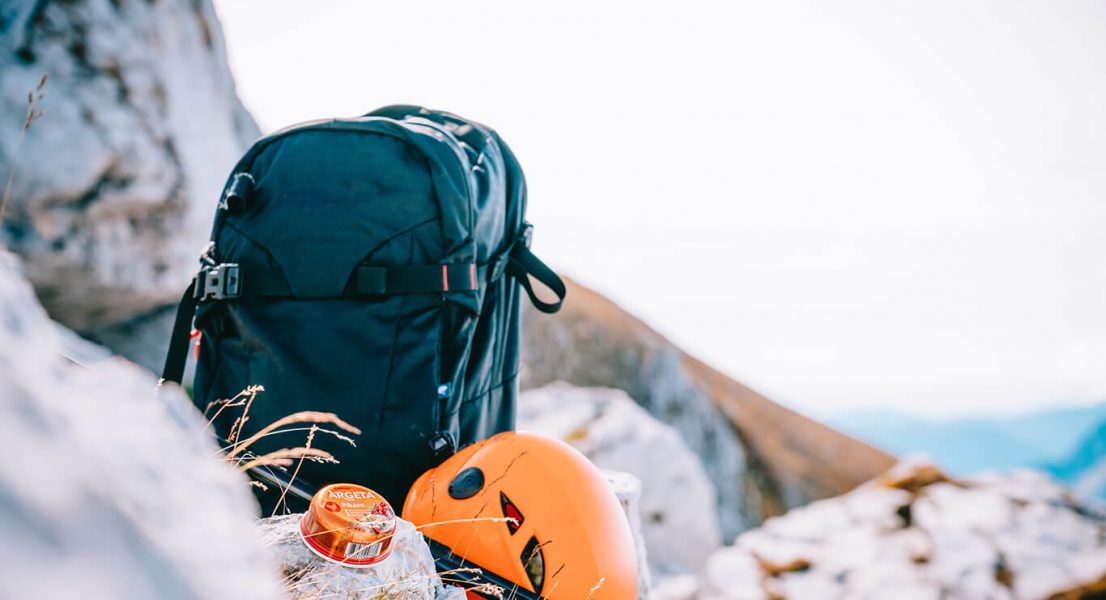Good company, invigorating air and views as far as the eye can see. This is what hiking has to offer, and this is why there is an ever increasing number of people being attracted to this sport.
And if mountains used to be reserved for die hard mountaineers just a couple of decades ago, hiking as we know it today, is one of the most affordable and rewarding sports you can dive into. Hiking gear is relatively cheap, hiking hotspots are easily accessible, mountain trails are mostly well maintained, and in case something goes awry, we have the luxury of being able to rely on mountain rescuers to have our back.
When we add all of this up it makes sense why we are seeing a skyrocketing popularity of mountain hiking. The relative low risk and high reward this type of recreation has to offer now attracts all sorts of people.
From solo hikers, couples, friends, families and pensioners to extreme mountaineers and instagram influencers. Enjoying the high altitudes of the great outdoors can really be a thing for anybody. Even if your not into long, sweaty uphill walks, you’re sure to experience a certain “je ne sais quoi” after reaching the summit, that will make the suffering fade in comparison.
Amidst this mountain hype it is important not to forget, that mountain hiking still is a dangerous activity, especially if not done right. So we sat down with a paramedic and mountain rescuer to try and figure out, why we all too often miscalculate our abilities and set out on a hike terribly unprepared. High altitudes can be merciless, and an alarming spike in mountain interventions proves this point.
Plan ahead and stay safe
So you want to go mountain hiking and stay as safe as possible? Mountain rescuers have a unanimous answer – find a hike that fits you, and don’t skimp out on the gear.
One of the main reasons why accidents happen is bad preparation and this usually happens before the hike even starts. Aspiring mountain lovers have a tendency to pick out difficult routes which often end up being a little bit too much for them to handle safely.
Let’s say a hike takes 3 hours to summit. It might not sound like much. Heck. One might even take on such a hike never having set foot on uneven terrain before. You get to the top exhausted, have a short rest, take a selfie, and turn around to go back down. But this is the part of the hike when things usually start going downhill. Literally.
The descent is the difficult part of almost any hike, so you have to make sure to have enough energy left to make it down safely. Take note. More than half of all the injuries in the mountains happen during the descent and are a result of sloppy footwork, most often because of exhaustion.
A lot of people use social media channels to plan out hikes nowadays. This is a good way to get inspiration when you’re out of ideas about where to go, but it is a double-edged sword. Most of the pictures you see don’t really give you any representation of the difficulty of the hike. A lot of novices get stuck in the most precarious of positions because of this.
This is why it is of the utmost importance that you thoroughly research your trip and find something that fits your level of preparedness. Talk to other hikers, read guide books, even book a mountain guide if you don’t have adequate experience to take on a peak by yourself. Start small and build up from there.
Gear up and pack smart
So we found a hike that suits us, but we have no idea how to gear up for the great outdoors.
First thing we need is a good pair of hiking boots – probably the most important piece of equipment you need for tackling the mountains. This is your only point of contact with the ground, so don’t be afraid to spend a little bit more on a comfortable pair of boots that fit all your needs. They will be your no.1 companion for years to come.
Approach shoes have been very popular these last couple of years, but it’s worth mentioning that until you’ve become a sure-footed hiker, you are much more at risk for ankle sprains when tiredness kicks in.
Next thing we’ll need is a helmet. Falling rocks are no rarity, and a helmet does wonders if you happen to catch one with your head. You don’t need anything fancy, and even a bicycle helmet is better than nothing.
Trekking poles are also a life saver. They can take some of the load of your feet, and they also act as an additional point of contact with the ground. Something you’ll find extra useful during the descent. When doing via ferrata, be sure to bring a via ferrata kit and a pair of gloves with you if blisters aren’t your thing.
Now that we’ve got our head and our feet sorted, we can focus on what to put on. We basically need something comfortable that doesn’t restrict our movement. Some stretch, moisture wicking and quick drying are also welcome, since it makes hiking all the more enjoyable. Bo sure to always bring a hat, gloves and something wind resistant with you since mountain tops tend to be windy all year round.
For day hikes a 20l to 35l backpack will do the trick. It has enough room for a basic mountain kit (a first aid kit, mylar blanket or bivouac sack, headlamp and a lighter) plus food and drink and a windbreaker.
When it comes to food and drink always take more than you think you’ll need, because you’ll end up consuming all of it. Hiking is a strenuous activity, and you need to keep your energy supplies high at all times. Pack a mountain trail mix for some on-the-go energy, and whole grain bread and a Argeta spread for a delicious lunch while you rest. Energy bars are also great to have close by, when fatigue kicks in. Liquids are heavy to carry, but you wont make it far without them. Be sure to bring and adequate amount of water since you’ll need to stay hydrated at all times.
Also carry a small bag to pack your litter. The mountains are not a self cleaning organism and people who help to keep them looking their best are held in very high esteem. Don’t walk past other people’s litter. Pick it up and dispose of it properly. Future generations will thank you for it.
The mountains are calling?
Our gear is packed, our snacks are safely stored, hiking boots are on and our plan is set. Are we ready to go? Not yet, there are a couple of last minute things we always need to do.
We need to check the forecast, so we don’t get surprised by a sudden change of weather. It’s advisable to make sure people know where we are going. Just to be safe. We should also make sure our phone battery is at 100%. We probably won’t need to call for help, but we will need to make sure dinner is ready when we get back home.







































